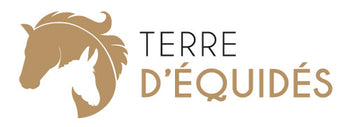Your horse's health and well-being are paramount, and a girth injury can be a cause for concern for any rider. If you notice your horse is injuring his girth, here are some steps you can take to manage the injury. situation efficiently.
1. Identify the injury
Start by carefully inspecting the area around the strap. Look for signs of injury, such as:
- Redness or swelling
- Cuts or abrasions
- Sensitivity to touch
If you notice significant damage or the pain seems severe, consult a veterinarian as soon as possible.
2. Evaluate the strap material
An ill-fitting or poor quality strap can cause injuries. Here are some things to check:
- Size and Fit: Make sure the girth is the correct size for your horse. A girth that is too tight or too loose can cause irritation.
- Material: Choose a strap made of soft, breathable material to minimize friction.
- General Condition: Check the girth for rough edges or damaged areas that could injure your horse.
3. Choosing the strap
Choosing the right girth is essential for your horse's comfort. Consider girths with:
- Proper padding: Choose straps with padding to reduce friction.
- Anatomical girths: Choose models that fit the shape of your horse for even pressure distribution.
Picasso straps are a great option to consider. Designed and manufactured in France , they combine innovation and craftsmanship. Here’s why they stand out:
- Quality Neoprene (5mm): Made with 5mm thick neoprene, these straps provide soft and durable padding. This high-quality material minimizes friction and pressure points, reducing the risk of injury while ensuring increased durability.
- Breathable Materials: The neoprene used is also breathable, allowing better air circulation and preventing heat build-up under the strap.
- Optimal Fit: Picasso girths are available in multiple sizes and configurations, ensuring a perfect fit for your horse.
4. Adjust the strapping method
Proper strapping technique can reduce the risk of injury. Here are some tips:
- Cinch gradually: Avoid tightening the girth all at once. Cinch gradually to allow your horse to get used to the pressure.
- Check the position: Make sure the strap is positioned correctly, at the right level, without creating excessive pressure points.
5. Treat the injury
If your horse has an injury, start with first aid care:
- Clean the area: Use a mild antiseptic solution to clean the wound.
- Apply treatment: Apply a healing ointment if necessary, after consulting a veterinarian.
- Monitor healing: Make sure the wound is healing properly and watch for any signs of infection.
6. Consult a veterinarian
If the injury is serious, your horse is showing signs of persistent pain, or you are unsure of the severity of the injury, it is essential to consult a veterinarian. They will be able to assess the situation and recommend appropriate treatment.
Girth injuries can be a concern, but with regular inspection of your equipment and careful attention to girthing technique, you can reduce the risk of injury. Considering quality girths, such as Picasso girths, made in France with 5mm neoprene, can also help prevent irritation and keep your horse comfortable. If in doubt, seek professional advice to ensure your horse's well-being.

